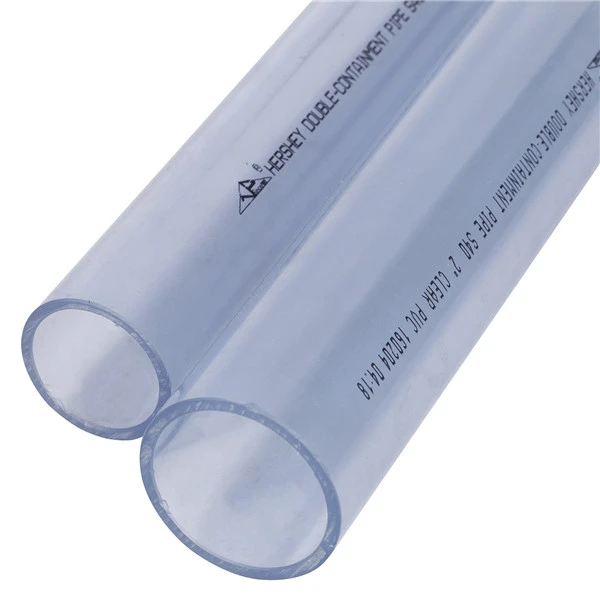நவ் . 16, 2024 01:23 Back to list
pvc-o pipe
The Advantages and Applications of PVC-O Pipe in Modern Infrastructure
Polyvinyl chloride (PVC) is one of the most widely used plastics in the world, thanks to its versatility, durability, and ease of manufacturing. Among the various forms of PVC, PVC-O (or oriented PVC) has emerged as a highly effective material for piping solutions in various applications. As industries seek more efficient and sustainable options for their infrastructure needs, understanding the benefits and applications of PVC-O pipe becomes increasingly pertinent.
What is PVC-O Pipe?
PVC-O pipe is manufactured through a process of molecular orientation, which involves stretching the PVC material to align its molecular structure. This unique process enhances the physical properties of the pipe, improving its strength, flexibility, and resistance to impact and pressure. The resulting product is lighter than traditional PVC pipes but offers significantly greater performance and longevity.
Key Advantages of PVC-O Pipe
1. High Strength-to-Weight Ratio One of the most significant benefits of PVC-O pipes is their impressive strength-to-weight ratio. This makes them easier to transport and install compared to heavier materials like traditional steel or concrete pipes. The lighter weight reduces transportation costs and allows for quicker installation, minimizing labor expenses and project timelines.
2. Durability PVC-O pipes exhibit excellent resistance to corrosion and chemical degradation, ensuring a long service life even in harsh environments. They can withstand UV exposure, making them suitable for outdoor applications, and their resistance to various chemicals makes them ideal for agricultural and industrial uses.
3. Flexibility The molecular orientation in PVC-O pipes provides enhanced flexibility compared to standard PVC pipes. This allows for easier bending and maneuvering around obstacles during installation, reducing the need for joints and fittings, which can potentially reduce points of failure over time.
4. Pressure Resistance PVC-O pipes are engineered to withstand high pressures, making them suitable for various water supply systems, sewage networks, and irrigation applications. Their ability to handle pressure fluctuations helps in maintaining the integrity of the pipeline over time.
5. Environmentally Friendly The manufacturing process of PVC-O pipes is more energy-efficient compared to that of traditional materials. Additionally, PVC-O is fully recyclable, contributing to a more sustainable infrastructure solution. By choosing PVC-O, industries can reduce their carbon footprint and minimize waste.
pvc-o pipe

6. Lower Maintenance Costs Due to their durability and resistance to damage, PVC-O pipes typically require less maintenance over their lifespan. This results in lower overall operational costs, making them an economically viable option for municipalities and industries alike.
Applications of PVC-O Pipe
The unique characteristics of PVC-O pipes make them suitable for an array of applications across different sectors
1. Water Distribution PVC-O pipes are commonly used in municipal water supply systems due to their ability to handle high pressures and resist corrosion. Their lightweight nature facilitates easier installation in urban areas where space might be limited.
2. Irrigation Systems In agriculture, PVC-O pipes are favored for irrigation projects because of their flexibility and durability. They ensure efficient water delivery while minimizing leakage and loss.
3. Sewage and Drainage The chemical resistance of PVC-O pipes makes them ideal for sewage and wastewater systems. Their ability to withstand the corrosive nature of waste materials ensures longevity and reliable performance.
4. Industrial Use Various industries utilize PVC-O pipes for transporting chemicals and other materials. Their resistance to a wide range of chemicals further enhances their applicability in diverse industrial processes.
5. Telecommunications The lightweight and flexible nature of PVC-O pipes is also advantageous in telecommunications infrastructure, where they can be used as conduit for fiber optic cables.
Conclusion
As industries continue to seek efficient, sustainable, and cost-effective solutions for their infrastructure needs, PVC-O pipes stand out as a compelling choice. With their numerous advantages and versatile applications, PVC-O pipes not only meet the demands of modern infrastructure but also contribute to a greener, more sustainable future. As technology advances and industries evolve, the role of PVC-O in enhancing efficiency and performance will likely become even more significant, making it an essential material in the construction of our world.
-
Durable PP Rigid Sheet: Lightweight, Chemical Resistant Solutions
NewsAug.21,2025
-
PVC Grey Sheet for Extraction: Chemical Resistant & Durable
NewsAug.19,2025
-
Durable PVC Pipe Fittings for Plumbing & Irrigation Needs
NewsAug.18,2025
-
HDPE Steel Belt Reinforced Spiral Corrugated Pipe | High Strength
NewsAug.17,2025
-
HDPE Pipe Fittings: Durable, Leak-Proof Solutions
NewsAug.16,2025
-
Premium CPVC Sheet: High-Temp & Chemical Resistant Solutions
NewsAug.15,2025

